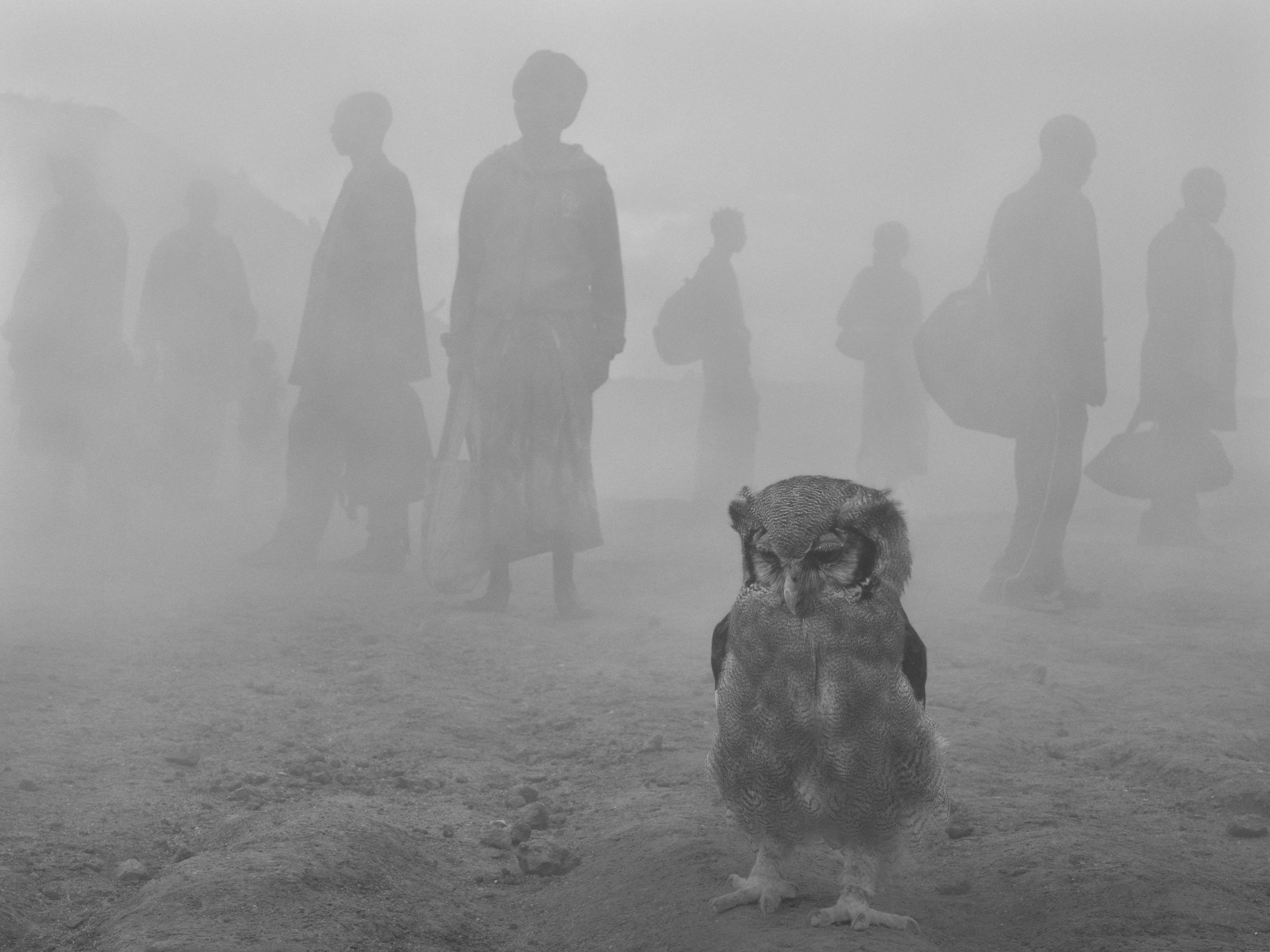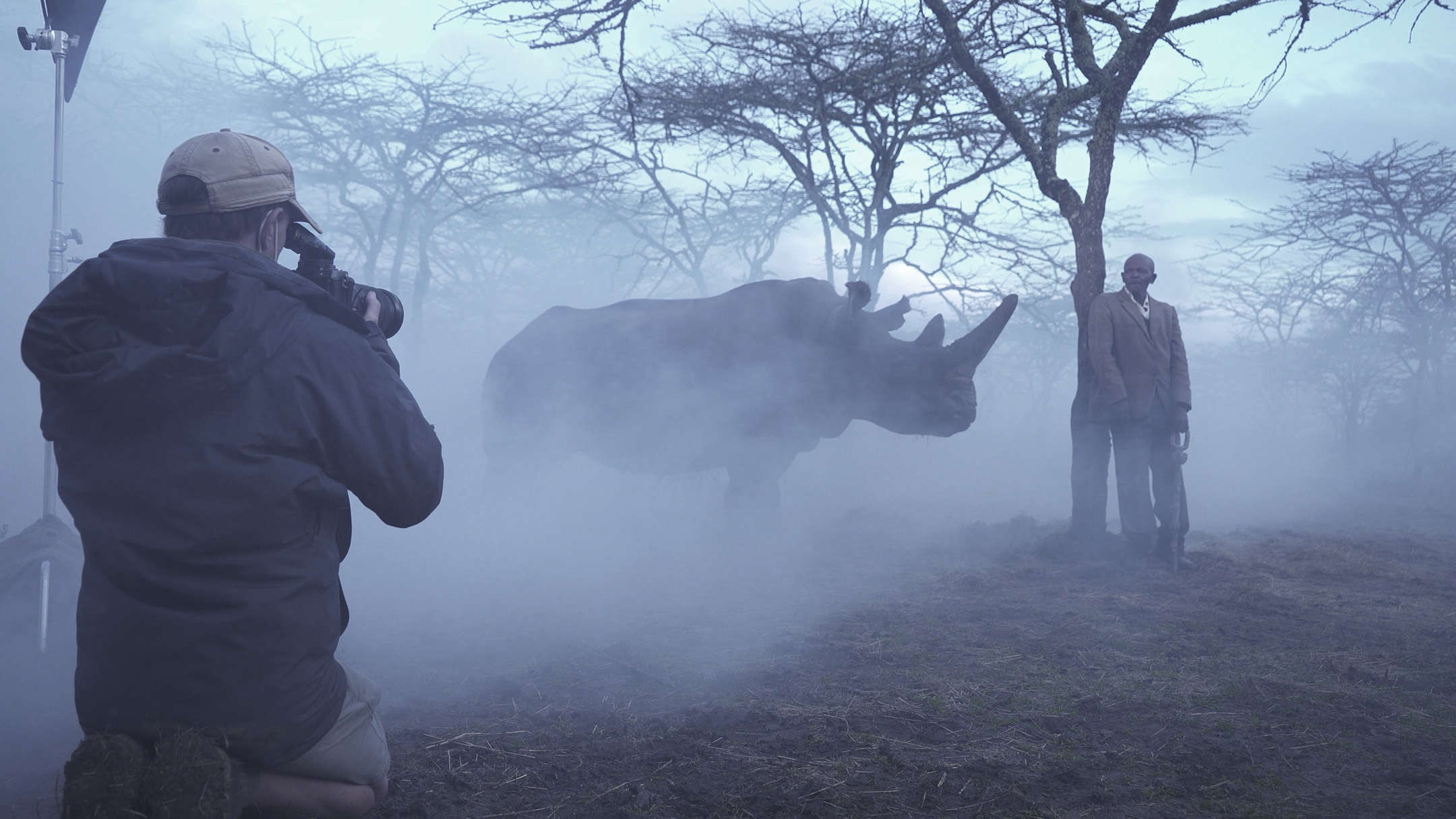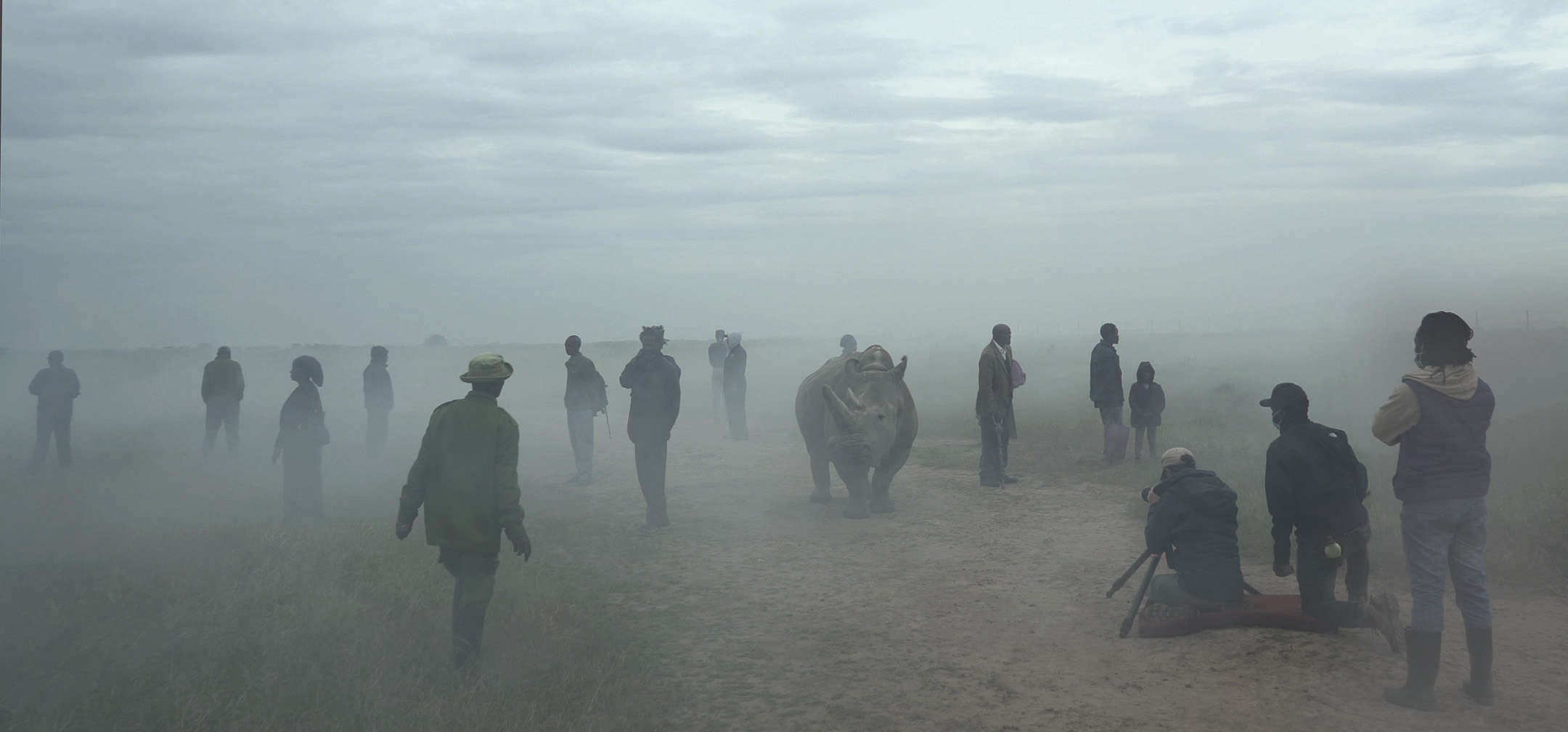Limbo. Lim·bo.
One dictionary definition of limbo is this:
“An uncertain period of awaiting a decision or resolution; an intermediate state or condition.”
Of course, in 2020, Year One of COVID-19, when this series was photographed, this description applied to all of us. It was a time wondering when we would be able to return to lives that could be fully lived. But there is another even more consequential reason that we are in this “uncertain period,” this “intermediate state”: right now, we don’t know if the Earth as we know it, or if we, will survive humanity’s ongoing destruction of the natural world.
A second definition of limbo (with the religious aspects—Christian, Roman Catholic—removed) is this:
“An abode of souls that are barred from heaven.”
What is heaven in this instance? Who are the abode of souls?
The souls are us, and all animals, all sentient creatures. And from what heaven will we be barred?
A celestial place, that is right under our feet. Our own planet. Earth, as it used to be, in its former natural glory.
But as I write, given what is unfolding on our planet, it’s not looking promising for a return to a more harmonious and stable way of being. The Doomsday Clock - that represents the likelihood of man-made global catastrophe - clicks ever closer to midnight. In 2021, it was just 100 seconds away from midnight, the closest it has ever been.
Humanity’s inability to dramatically change its treatment of the natural world is not new. We have been here before, but the lessons have not been learned. Over the centuries, entire civilizations have collapsed due to environmental degradation, civilizations that imposed too much burden on their surrounding natural world. (Read Jared Diamond’s Collapse for a compelling recounting of many of these.) But in those times, centuries ago, the societal collapse was localized.
Now, with so vastly many more of us, it’s not “just” a region that is destroyed. If little changes, the destruction will mushroom into an ecological—and civilizational—collapse of our entire planet.
This time, in the twenty-first century, the collapse will be global.

These last few years, when I look at imagery of many places on the planet, I no longer find myself able to experience a pure wonder at their beauty. I now have a bittersweet taste in my mouth and an anxious pit in my stomach. I find myself wondering, how long will those places remain pristine, given the speed of environmental degradation? How long before scorching wildfires claim them? And will they recover from these mega-fires? So many forests—damaged by climate change, by wildfires and mega-droughts—are not recovering or returning like they once did.
As the natural world we knew rapidly disappears before our eyes, we yearn for what was. Not in a nostalgic or sentimental way, but with a deep visceral ache in our being.
I’m stating the obvious, but it needs to keep being repeated: that in destroying nature, we will also ultimately destroy ourselves. A healthy natural world is essential for the well-being of all humanity.
And this leads me to this series. During the course my photographic life, there has been a steady progression toward the photography of people, toward, in The Day May Break, people now be-ing the literal focus of the images. Some may ask, after all these years, why?
Because it was time.
Nearly twenty years ago I started photographing the wild animals of Africa as an elegy to a dis-appearing world. After some (too many) years, seeing the escalating environmental destruction, I felt an urgent need to move away from that kind of work and address the destruction in a much more direct way. This led to the series, Inherit the Dust (2016) and This Empty World (2019). These were mainly about habitat loss and biodiversity loss, significantly as a result of human ex-pansion and development. The Day May Break addresses perhaps the biggest crisis of all: climate change, or a more fitting phrase, climate breakdown, which negatively impacts every living creature on the planet.
And so it was that I came to photograph The Day May Break in Zimbabwe and Kenya in late 2020.
It is the first part of a global series portraying both people and animals that have been impacted by environmental degradation and destruction.
The people in this series of photos have all been badly affected by climate change. Some were displaced by cyclones that destroyed their homes. For some, like Kuda in Zimbabwe, or Robert and Nyaguthii in Kenya, it was more tragic: both of them lost two young children, swept away by the floods.
Many others in this series are, or were, farmers, impoverished by years-long severe droughts, and ultimately forced to abandon their land and move elsewhere. People living in rural areas, especially those working on the land, are almost always the hardest hit by environmental degradation, due to the exhausted natural resources upon which they rely. The grim irony is that these people are among those who have a small environmental impact on the planet, and yet are the most vulnerable to suffer the consequences of the industrial world’s ways.
The photographs were taken at five sanctuaries and conservancies. The animals there are almost all long-term rescues, as a result of everything from poaching of their parents, to habitat destruction, to poisoning.
These animals can never be released back into the wild, as they would not survive. With their lives now spent within the sanctuaries, they have become habituated to humans. As a result, it was safe for human strangers to be close to the animals, photographed, crucially, in the same frame at the same time.
(You can read each individual’s story—humans and animals—from p.142 after the full page plates.)
The fog is the unifying visual, symbolically causing a once-recognizable world to fade from view. The animals and humans in the fog are both together—in the same frame—and yet disconnected, never making physical or eye contact. But they are there together.
However, my intention was that the fog often renders the animals almost a dream, or a memory of what the people in the photographs may once have witnessed in their lives.
The fog (which was created by water-based non-toxic fog machines on location ) is also, of course, an echo of the suffocating smoke from the wildfires, driven by climate change, devastating so much of the planet
One dictionary definition of limbo is this:
“An uncertain period of awaiting a decision or resolution; an intermediate state or condition.”
Of course, in 2020, Year One of COVID-19, when this series was photographed, this description applied to all of us. It was a time wondering when we would be able to return to lives that could be fully lived. But there is another even more consequential reason that we are in this “uncertain period,” this “intermediate state”: right now, we don’t know if the Earth as we know it, or if we, will survive humanity’s ongoing destruction of the natural world.
A second definition of limbo (with the religious aspects—Christian, Roman Catholic—removed) is this:
“An abode of souls that are barred from heaven.”
What is heaven in this instance? Who are the abode of souls?
The souls are us, and all animals, all sentient creatures. And from what heaven will we be barred?
A celestial place, that is right under our feet. Our own planet. Earth, as it used to be, in its former natural glory.
But as I write, given what is unfolding on our planet, it’s not looking promising for a return to a more harmonious and stable way of being. The Doomsday Clock - that represents the likelihood of man-made global catastrophe - clicks ever closer to midnight. In 2021, it was just 100 seconds away from midnight, the closest it has ever been.
Humanity’s inability to dramatically change its treatment of the natural world is not new. We have been here before, but the lessons have not been learned. Over the centuries, entire civilizations have collapsed due to environmental degradation, civilizations that imposed too much burden on their surrounding natural world. (Read Jared Diamond’s Collapse for a compelling recounting of many of these.) But in those times, centuries ago, the societal collapse was localized.
Now, with so vastly many more of us, it’s not “just” a region that is destroyed. If little changes, the destruction will mushroom into an ecological—and civilizational—collapse of our entire planet.
This time, in the twenty-first century, the collapse will be global.

These last few years, when I look at imagery of many places on the planet, I no longer find myself able to experience a pure wonder at their beauty. I now have a bittersweet taste in my mouth and an anxious pit in my stomach. I find myself wondering, how long will those places remain pristine, given the speed of environmental degradation? How long before scorching wildfires claim them? And will they recover from these mega-fires? So many forests—damaged by climate change, by wildfires and mega-droughts—are not recovering or returning like they once did.
As the natural world we knew rapidly disappears before our eyes, we yearn for what was. Not in a nostalgic or sentimental way, but with a deep visceral ache in our being.
I’m stating the obvious, but it needs to keep being repeated: that in destroying nature, we will also ultimately destroy ourselves. A healthy natural world is essential for the well-being of all humanity.
And this leads me to this series. During the course my photographic life, there has been a steady progression toward the photography of people, toward, in The Day May Break, people now be-ing the literal focus of the images. Some may ask, after all these years, why?
Because it was time.
Nearly twenty years ago I started photographing the wild animals of Africa as an elegy to a dis-appearing world. After some (too many) years, seeing the escalating environmental destruction, I felt an urgent need to move away from that kind of work and address the destruction in a much more direct way. This led to the series, Inherit the Dust (2016) and This Empty World (2019). These were mainly about habitat loss and biodiversity loss, significantly as a result of human ex-pansion and development. The Day May Break addresses perhaps the biggest crisis of all: climate change, or a more fitting phrase, climate breakdown, which negatively impacts every living creature on the planet.
And so it was that I came to photograph The Day May Break in Zimbabwe and Kenya in late 2020.
It is the first part of a global series portraying both people and animals that have been impacted by environmental degradation and destruction.
The people in this series of photos have all been badly affected by climate change. Some were displaced by cyclones that destroyed their homes. For some, like Kuda in Zimbabwe, or Robert and Nyaguthii in Kenya, it was more tragic: both of them lost two young children, swept away by the floods.
Many others in this series are, or were, farmers, impoverished by years-long severe droughts, and ultimately forced to abandon their land and move elsewhere. People living in rural areas, especially those working on the land, are almost always the hardest hit by environmental degradation, due to the exhausted natural resources upon which they rely. The grim irony is that these people are among those who have a small environmental impact on the planet, and yet are the most vulnerable to suffer the consequences of the industrial world’s ways.
The photographs were taken at five sanctuaries and conservancies. The animals there are almost all long-term rescues, as a result of everything from poaching of their parents, to habitat destruction, to poisoning.
These animals can never be released back into the wild, as they would not survive. With their lives now spent within the sanctuaries, they have become habituated to humans. As a result, it was safe for human strangers to be close to the animals, photographed, crucially, in the same frame at the same time.
(You can read each individual’s story—humans and animals—from p.142 after the full page plates.)
The fog is the unifying visual, symbolically causing a once-recognizable world to fade from view. The animals and humans in the fog are both together—in the same frame—and yet disconnected, never making physical or eye contact. But they are there together.
However, my intention was that the fog often renders the animals almost a dream, or a memory of what the people in the photographs may once have witnessed in their lives.
The fog (which was created by water-based non-toxic fog machines on location ) is also, of course, an echo of the suffocating smoke from the wildfires, driven by climate change, devastating so much of the planet



